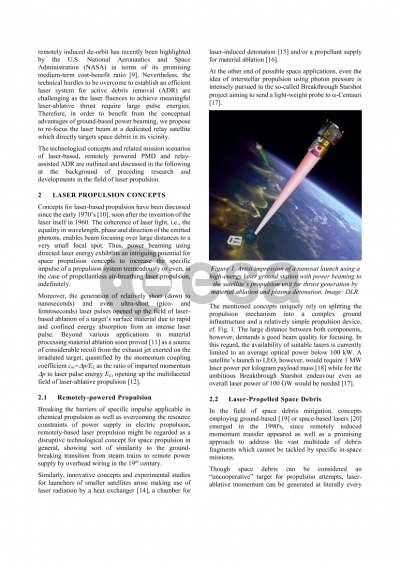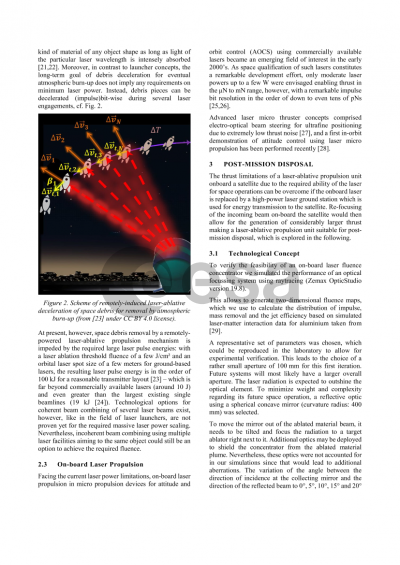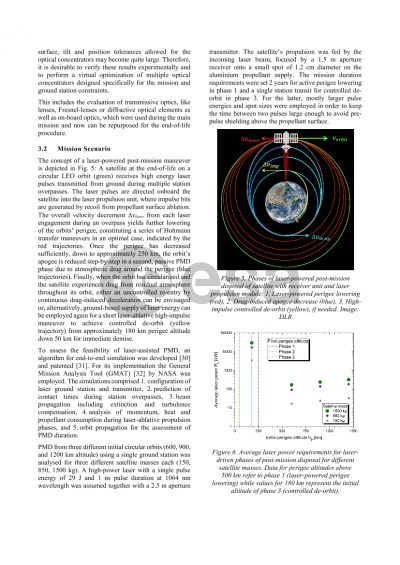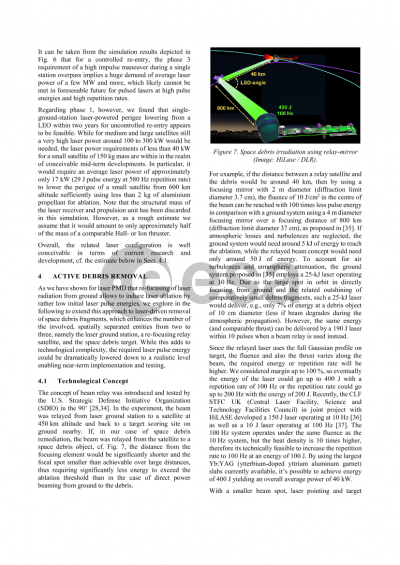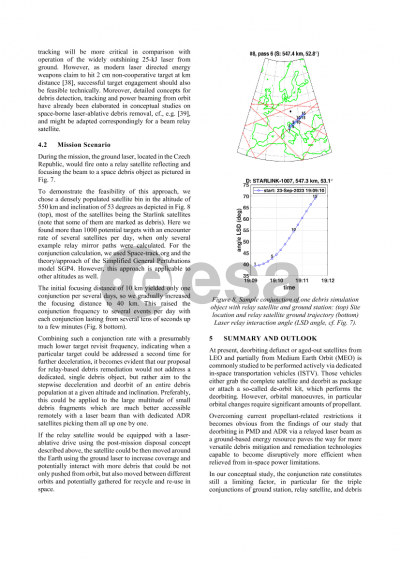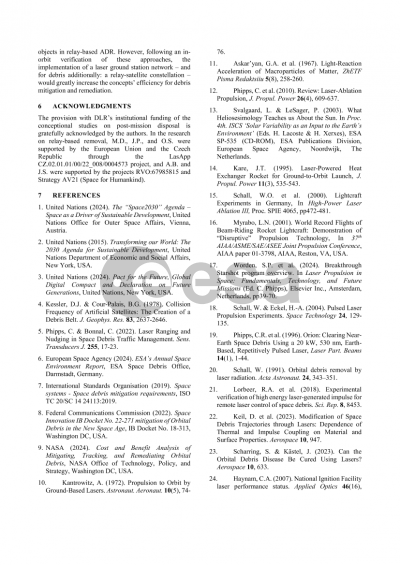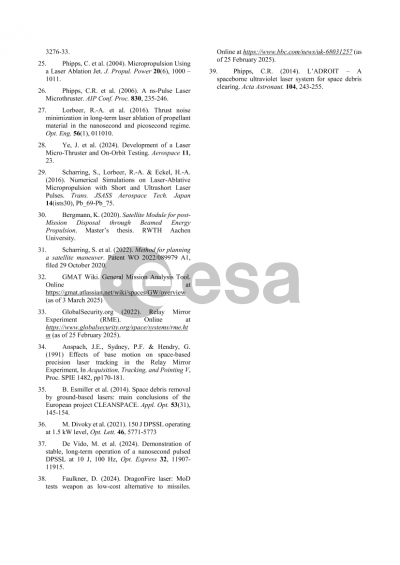Document details

Abstract
Maneuvers for de-orbiting objects from the low Earth orbit (LEO), e.g., for post-mission disposal (PMD) of satellites or active removal of space debris (ADR), require large velocity changes in the order of 100 to 300 m/s, hence, a significant amount of propellant and, for ADR, a suitable propulsion mechanism. In principle, remote energy supply from ground using high energy lasers could enable advanced propulsion solutions as the incident laser pulse can be used to generate recoil from material ablation. However, for conceivable laser types with pulse lengths in the nanosecond range, the required fluence on metal surfaces is around 5 to 10 J/cm². Considering the minimum laser beam diameter in orbit that can be achieved from ground, this would demand for pulse energies around 100 kJ, which clearly requires further research and developments in the field of coherent laser beam combining.
Nevertheless, the pulse energy requirements can be eased if the beam from a laser ground station is re-focused in orbit. This would enable laser-based ADR and PMD using currently available laser technology, e.g., the Bivoj laser at HiLASE, which operates at a pulse energy of 150 J at 10 Hz repetition rate, thus constituting the world’s most powerful laser system with suitable wavelength, pulse duration and beam quality.
For laser-based PMD a beam re-focusing unit would be implemented on the respective satellite itself in order to power a simple laser-ablative propulsion unit. Using a ray tracing model for onboard beam focusing we identified multiple working points for propulsion considering aberrations due to misalignment between ground station and onboard receiver. The system would become operational at an incident pulse energy of 10 J while at 50 J the system performance becomes very robust against misalignment and system aberrations for multiple optical concepts. In simulations we found that, using a pulse energy of 29 J at 580 Hz repetition rate and less than 2 kg of propellant for ablation, the perigee of a small satellite at 600 km altitude could sufficiently be lowered for subsequent atmospheric slow-down and burn-up already within two years.
For laser-based ADR we consider a dedicated beam relay satellite to divert the beam and focus it over a distance of up to 40 km to space debris. This would decrease the pulse energy requirements from 100 kJ down to 200 J, while the lowered energy can partially be compensated by increasing the pulse repetition rate. Apparently, the overall maneuver duration and efficiency is strongly limited, since a triple conjunction (station – satellite – debris) is needed for laser operation. Hence, the approach is reasonable only when a multitude of objects is targeted during several years. In preliminary simulations using orbital data of 10k LEO objects and the beam relay at 550 km and 50° inclination, the predicted triple conjunctions occur several times a day. This number can be increased significantly, when laser energy and thereby its operating distance is enhanced.
Following an in-orbit verification of these approaches, the implementation of a laser ground station network – and for debris: a relay-satellite constellation – would greatly increase the concepts’ efficiency for debris mitigation and remediation.
Preview

